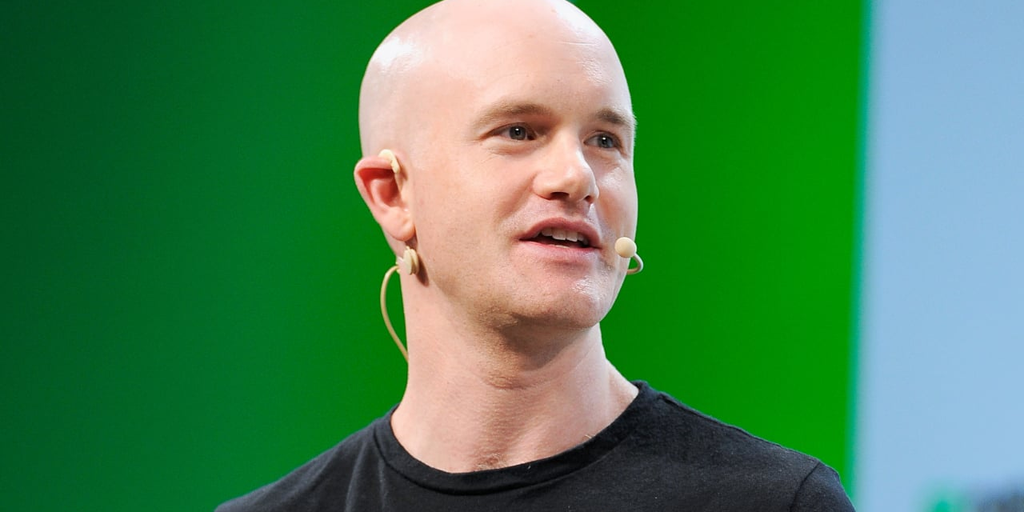
Coinbase CEO Brian Armstrong said Thursday that the crypto heavyweight is taking off its gloves for a renewed fight in the stablecoin ring.
During the company’s fourth-quarter earnings call, Armstrong said the firm will aim to challenge Tether’s position as the industry’s reigning stablecoin issuer. The ultimate goal is to make Circle’s USDC the world’s “number one dollar stablecoin.”
Armstrong characterized this new aim as a “stretch goal,” signaling it represents an ambitious yet potentially achievable feat, which will nonetheless push Coinbase outside its comfort zone.
As the second largest stablecoin, USDC’s market cap stands at $56 billion after hitting an all-time high last week. Still, that leaves a lot of ground for USDC to cover as it works to overtake Tether. As of this writing, USDT currently accounts for a hulking 60% of the stablecoin market at $142 billion market capitalization, per CoinGecko.
Because stablecoins are designed to maintain a 1:1 peg with another currency, in this case the U.S. dollar, the market capitalization tends to be a reliable indicator of issuance.
Coinbase CFO Alesia Haas contextualized Armstrong’s bold call on Thursday. “I think it’s important to note that we hope to achieve this over the next few years,” she said.
The high bar for Coinbase comes after its stronger-than-expected fourth quarter was marked by $1.3 billion in profits. Meanwhile, stablecoin legislation appears to be gaining momentum on Capitol Hill, after years of quibbling among lawmakers.’
Sen. Tim Scott (R-SC), Senate Banking Committee Chairman, has already pledged that legislation covering stablecoins will be passed within the first 100 days of President Donald Trump’s term.
That bill, dubbed the GENIUS Act, would create a pathway to legality for issuers of U.S. dollar-backed stablecoins. That would include sharing monthly audits on the health of the fiat reserves backing their products, according to a draft of the bill seen by Decrypt.
Since lawmakers may end up modifying the stablecoin bill before it can be passed through both chambers of Congress and signed into law by Trump, how sweeping stablecoin legislation could ultimately impact USDC, USDT, or any stablecoin remains unclear.
Can legislation help?
Hours before Coinbase’s earnings, JP Morgan analysts posited that Tether may be forced to change the structure of the dollar-equivalent reserves backing USDT.
In its most recent attestation report, Tether said those reserves consist mostly of cash and cash equivalents and other short-term deposits, including assets like U.S. Treasuries and money market funds, which account for 82% of Tether’s reserves.
For years, Tether has sporadically and then more regularly published attestation reports about the reserves that back its stablecoin. But accountants and competitors alike have been quick to point out that none of those financial statements have been audited.
While audits seek to uncover risks and potential compliance issues by gathering data, attestations are typically used to authenticate how truthful data is.
But it is worth pointing out that, as of this writing, Circle also has never published an audited report on the reserves backing USDC. Like Tether, the company publishes attestations about the “highly liquid fiat reserves” backing USDC and EUROC, its Euro-backed equivalent.
JP Morgan posited that Tether may have to sell a significant sum of “non-compliant” assets in its reserve, like Bitcoin and any remaining commercial paper, if it wants to comply with new U.S. rules.
A Tether spokesperson pushed back against JP Morgan’s suggestion, telling Decrypt that $20 billion in “other very liquid assets” had been overlooked by the Wall Street titan, along with “more than $1.2 billion in profits per quarter” from holding swathes of government debt.
Notably, Tether may also fall outside the stablecoin bill’s scope; the company recently relocated its business from the British Virgin Islands to El Salvador.
“If stablecoin regulation passes in the U.S., I do think it will disproportionately help USDC gain market share,” Bitwise Senior Investment Strategist Juan Leon told Decrypt. “But will that be enough to surpass USDT?”
USDC would have to become the predominately used stablecoin in developed markets for it to have a chance at surpassing USDT, Leon said. USDC is less likely to be able to displace USDT’s dominance in emerging markets, he added.
Former SEC Chair Gary Gensler once referred to stablecoins as “poker chips” used in decentralized finance, or DeFi, as a common way for traders to easily park funds and lock in gains. Remittances and payments represent real-world use cases, while the use of stablecoins in money laundering and sanctions evasion has also drawn controversy.
‘Accelerating’
On-chain activity involving stablecoins is largely concentrated on networks that support smart contracts, like Ethereum and Solana. But Armstrong said growing USDC’s footprint on the Ethereum scaling network Base—which Coinbase itself created and launched—is key, along with fostering commercial partnerships.
“We think USDC has a network effect behind it, and the compliant approach that they’ve taken, I think, is going to be really defensible long term,” Armstrong said, referring to Circle.
“We’ll be accelerating the market cap growth of USDC with more partnerships, and leaning into new use cases like adding payments support across our product suite,” he continued.
Stablecoin revenue totaled $224 million in Coinbase’s fourth quarter, falling $20 million from the previous quarter and representing just 9.4% of the company’s total sales.
In its shareholder letter, Coinbase described USDC as “the fastest growing ‘major’ stablecoin in 2024,” while pointing to $12 billion in on-chain USDC payments that the exchange facilitated.
Coinbase is taking an offensive approach to growing USDC now. But during the bear market in 2023, when trading volumes lagged, the company saw stablecoin revenue bolster its subscriptions and services segment.
In fact, subscriptions and services revenue temporarily surpassed transaction revenue as Coinbase’s main money maker, totaling $334 million and $289 million, respectively, in the third quarter of 2023.
In August of that year, Circle said Coinbase had taken an equity stake in the firm. Both companies agreed to shelve a “self-governance consortium” to better hone their alignment.
Circle and Tether did not immediately respond to requests for comment from Decrypt.
Edited by Stacy Elliott
Daily Debrief Newsletter
Start every day with the top news stories right now, plus original features, a podcast, videos and more.
https://decrypt.co/306070/coinbase-targets-tether-86-billion-stretch-goal








